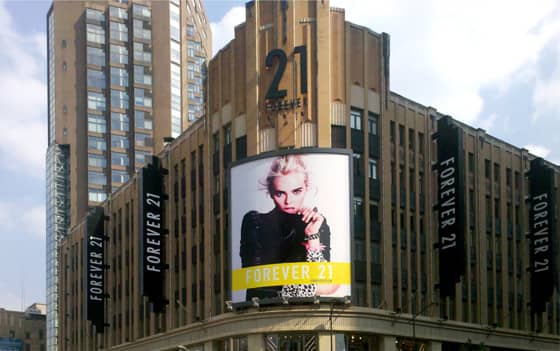18 Aug China: The Economics of Teenage Shopping
During June and July 2013 my wife and I took our children, both born in China, back to see where they came from. It was an incredible trip for all of us. For my children it made a very abstract part of their lives real. For my wife and I it completed a circle we began in 1997. This is the third post in a series of stories about our trip. But if you know me, you’ll know I’m attracted to the fringes of any narrative. That’s where the memories are. I won’t be giving any interminably long and boring slide shows of the trip but if you want to take a look at some of the photographs I took, feel free to do so in the comfort of your own Internet café.
China is a cultural shock. Any similarities to America (and there are many) are only skin deep. The object is to take notice but never assume that what you see is an exact replica of what you know back home. I know this and my wife knows this because this was our third trip to the country. However, the focus of this journey was to introduce China to our children. This was their first visit to the country of their birth—to any foreign place actually. And there were lessons to be learned. Yet, they were raised and are American teenagers through and through. Very few Chinese would mistake them for fellow citizens (well, except for the hostess standing outside a first class lounge at the Guangzhou airport who mistook my youngest for my interpreter, but that’s another story).
The focus of our trip was cultural. We toured with other families who were also bringing their girls back to China for their first look as burgeoning adults. So, most of the trip focused the landmarks of Beijing (like the Forbidden City), centuries-old traditions (like visiting a tea research institute and learning the ways of a traditional tea ceremony), and the landscape depicted in art from dynasties past (like the limestone mountains of Guilin).
While my girls enjoyed these cultural lessons, there was always a universal thread they continued to bring to the surface: they wanted to go shopping. Not for the kitsch their father was focused on and not for traditional Chinese souvenirs—they wanted to go “clothes shopping.” My youngest was most eager and reminded us every time we arrived at a new metropolitan area. My answer was consistent: Shanghai, our last stop, was the fashion mecca of China. That is where she should go shopping. However, delayed gratification was a hard concept to hold onto. We had to tour a new mall in the town where they were born, far from the traditional city centers. But I was sure she’d find something in Shanghai. So, for my daughter, a visit to that city could not come fast enough.
At the end of a long day touring historical places in Shanghai (and after an arduous three weeks of tooling all over China) we went to Nanjing Road. This was supposed to be the shopping center of Shanghai and, therefore, of all of China (although, I doubt Peng Liyuan, stylish wife of Chinese President Xi Jinping would ever buy her clothes there). It’s a huge outside pedestrian mall where the hawkers of fake Rolexes just might outnumber those looking for real things: real fashionable things. The girls wanted to buy clothes. Our guide, Iris, gave us 90 minutes to walk around before our rendezvous. We were on a mission and, with no time to spare, we went looking. But where to start? We knew none of these stores. Which ones had the cool clothes? Stopping strangers on the street and asking “Where do the cool girls shop?” was out of the question. First, no one would have a clue what we were saying. Second, even if they did, my teens would sink below ground if I opened my mouth to ask. We entered a store that had big end-of-season sales and lots of women walking in. We looked around.
I was clueless. What were they looking for? Well, any woman will tell you: “When I see it I will know.” So I was of no help. But, of course, that didn’t stop me from calling them over to say “What about this?” This is why I don’t go and wouldn’t be allowed to go clothes shopping with them at home. Although, in my defense, sometimes —sometimes— my oldest has been known to ask my opinion in matters such as this. She knows I have a good eye but is suspicious because I am a man and her father: two strikes that are hard to overcome.
We found an interesting part of the store and the girls grabbed some dresses. I sat down as the young salesladies parted the curtain to let them try them on. My eye told me they looked pretty retro, like 1960s cocktail dresses, which I liked. But they didn’t look haute coutre by any stretch of the imagination, even in the teen sense. In fact, they looked a bit dumpy. They weren’t made very well. And they didn’t fit right. They were almost great, if you know what I mean. My youngest was enthralled with one and asked if she could put it on “hold.” That is, she asked me to ask if she could put it on hold.
She’d been with me the whole trip and knew I didn’t speak Mandarin. What was she thinking? But I tried. First, the salespeople didn’t speak English. Using my hands to describe the meaning of “hold” was useless. I tried my longstanding last resort: “Does anyone here speak English?” (Remind me to tell you the first time I used that in a Prague bus station in the 1970s). A saleslady brought over a young man, a customer, to help. But I didn’t get far. “Hold. Hold. We want to hold it and come back within the hour to buy it.” “You want to buy it now and come back later to get it?” he replied. I was useless. The concept seemed to be alien. No one puts something on hold. I had to break the news to my daughter. Either she bought it now or she would have to forget it. And, time was running out. We would have to meet Iris soon.
We left empty-handed. My daughter was not happy. Some day she may appreciate our efforts to help. But not then. She was getting in a bad mood and that did not bode well for a family of tired tourists. I pulled my oldest aside and said, “Have you noticed, Chinese “style” is, well, a bit different from our standards. It’s not what Americans would call stylish.” She had to agree. I knew they had been eyeing Chinese women throughout our trip. I played my hand. However, her agreement did not end our quest.

Shanghai’s Forever 21. Very Chinese.
Suddenly, my oldest spied something familiar. A woman was carrying a bright yellow Forever 21 bag. “Go over and ask her where the store is,” I suggested. She shook her head. But the second time we saw the bag I went over, pointed to the bag, and in my best English said “Where is it?” It took a minute but she finally understood. She pointed that way. We started walking fast looking closely at each store. Time was running out.
Four long blocks later we found it. I wish I had a photo of their joyous faces. They ran in. We trailed. Suddenly, we weren’t in China any longer. We had finally bridged the cultural differences we had come to know throughout our trip by embracing globalization. I thought about discussing the concept with the kids but wisely jettisoned the idea immediately. They were very busy, looking around. My youngest was the first to find her Chinese souvenir, then my oldest. We got off pretty easy: both tops were under US $15. But, as we walked back to our pickup point, I couldn’t help myself. “Couldn’t you have gotten that cheaper at the Forever 21 close to our house?” “But these are made in China,” they responded. It’s all made in China! And then I had to tell them the truth.
“Yes, it’s all made in China. But here’s what happens. American and other foreign companies have their wares made in China because manufacturing costs and wages are low. The ship them to the States. Then these same companies sell them back to stores in China but the Chinese have to pay duty on them, which, in turn, raises the prices. These clothes are cheaper in the States than where they were made!”
My impromptu economics lesson fell on deaf ears. They had their authentic Chinese souvenirs and that was that.
Related posts: Read other stories about our trip back home to China.





Sorry, the comment form is closed at this time.